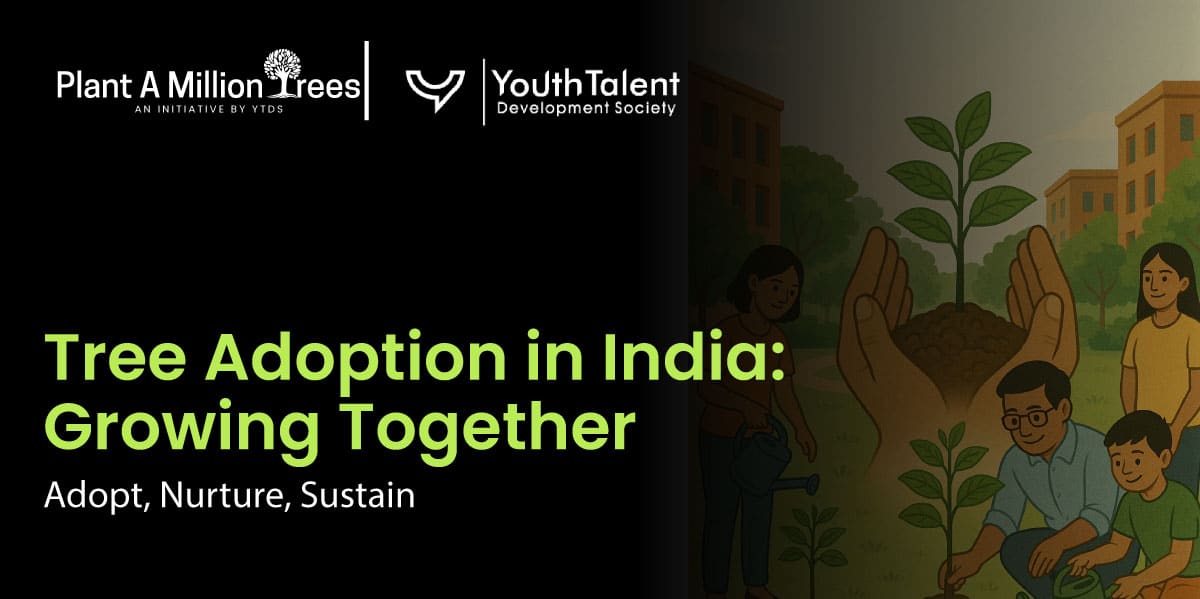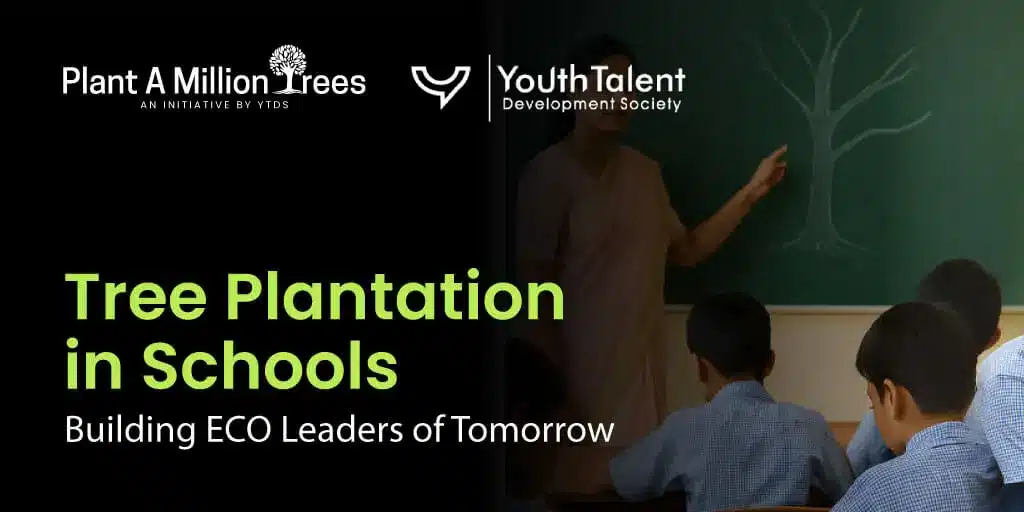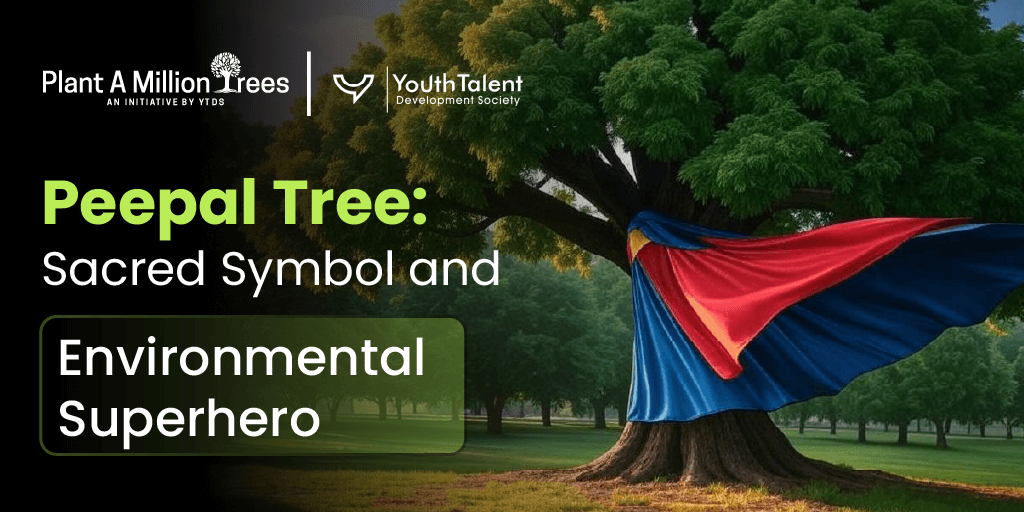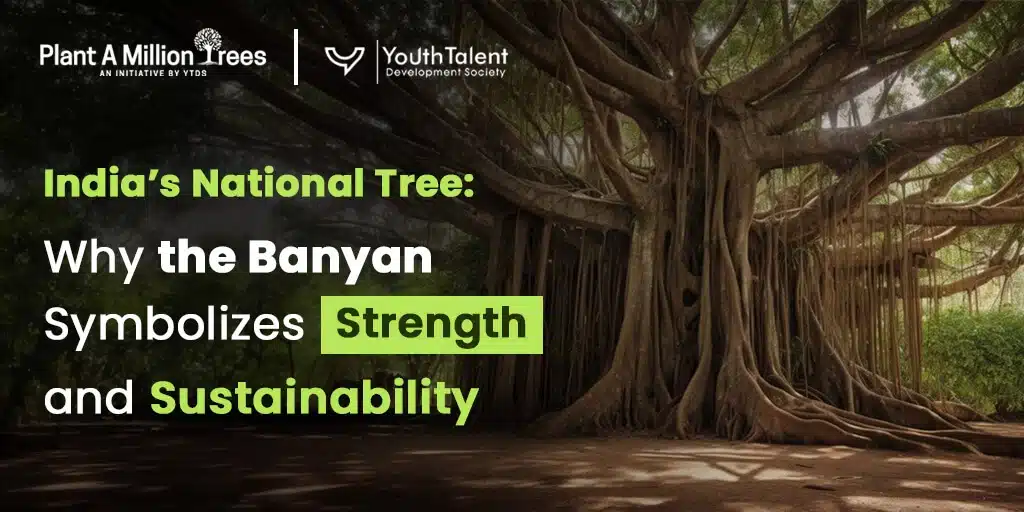Consider a morning in India, in which students are not only withholding books, but also planting saplings in the...
Amidst the concrete jungles of modern India, with towers of glass and highways of veins, there also is something important which we may forget–our trees. Cities are hotter, dustier, and more polluted than they have ever been as green cover is disappearing at an alarming rate. It is reported that every year India is losing thousands of trees to urban sprawl, development of infrastructure and climate stress. But simultaneously, there is grassroots work going on in neighborhoods–programs in which local communities are adopting trees to defend, care for and raise.
This is called a tree adoption program and it is also becoming popular across India as a sensible people driven solution to protect the urban forests. The simplicity of tree adoption is its advantage: no need to plant a sapling and forget about it, adoption means long-term treatment in case of collective responsibility.
In this blog, we are going to explore the nuts and bolts of what a tree adoption program in India would entail, why it is important, how it works, and how you can initiate one in your own neighborhood. We’ll also present real-life role models, how schools and corporates can help, and the things you can do to get your neighbourhood involved in the adoption of urban trees. Your mind will be well-informed, and you will have the inspiration and the drive to start or support a movement to restore shade, biodiversity, and clean air to your city.
Why Tree Adoption Programs Matter
The cities of India are growing at a very high rate and along with them, the danger to the green cover. Whenever a road is expanded or a flyover built, there is the loss of rows of trees. This is not merely aesthetic loss, as it interferes with ecosystems, raises heat islands and deteriorates air quality.
This is where the tree adoption programs come in. In contrast to plantation drives that have a short life span, the models of adoption revolve around care, continuity, and accountability. The idea is no more complex than this: citizens or groups of citizens have the duty to care about the trees in the long run: watering them, taking care of saplings so that they do not get damaged, and keeping them alive.
Environmental Benefits
- Improved survival rates: It has been found that when saplings are not given aftercare, only about 50 percent of them survive in urban plantations. Adoption provides steady monitoring which increases the survival rates significantly.
- Better biodiversity: Adopted trees may include native species which help local birds, pollinators and micro-ecosystems.
- Climate resilience: An increase in trees implies the reduction of urban heat and improved rainwater uptake, decreased dust and pollution.
Social Benefits
- Bonding in the community: Adoption promotes cooperation. The welfare associations (RWAs) of residents, the NGOs, and the schools establish closer relationships with the community.
- Empowerment of citizens: People do not just rely on the municipal authorities to take care of the urban greenery.
- Education & awareness: The children and youth involved in adoption get to know about ecology, responsibility and long-term sustainability.
As one of the volunteers who work in the Youth Talent Development Society (YTDS), I will quote that When it comes to planting, there is no difficulty; it is the service of protecting. That is the gist of tree adoption.
How Tree Adoption Works in India
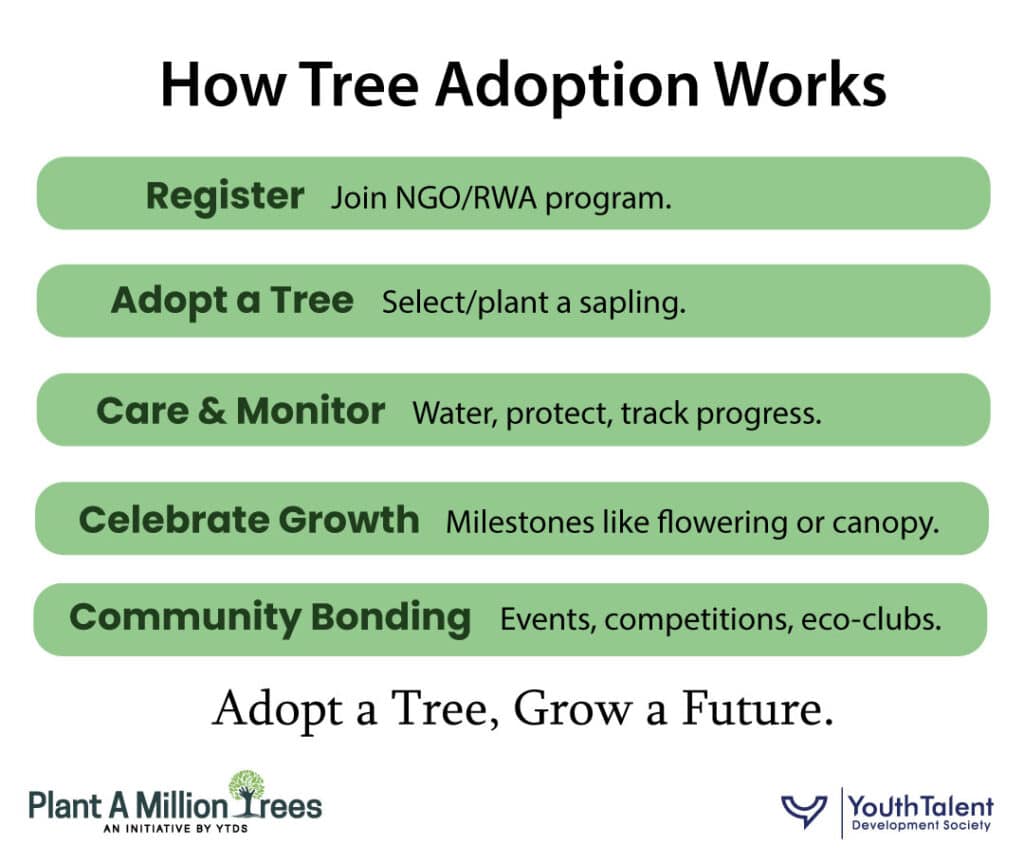
A tree adoption program is more organized compared to a one day plantation event. Consider it a stage-by-stage tree-tending life cycle:
- Registration: The citizens make individual or group registrations to adopt one or more saplings. Numerous NGOs and municipal organizations keep data on the internet or offline.
- Planting or Selecting Trees: Adoption may start at the stage when trees are planted or one may adopt an existing tree, which needs care.
- Care Schedule: Adopters bathe often, feed with organic fertilizer and guard against pests, stray animals or construction damage.
- Monitoring and Reporting: There are cases that organizations track the health of trees through the use of mobile applications or WhatsApp groups to hold them accountable.
- Community Events: To keep the spirit alive, adoption is often celebrated through awareness events, eco-fairs or competitions.
Example: A 4-Step Approach
- Join your local NGO or RWA.
- Find a sapling and label it (with a nameplate, as appropriate).
- Watering and attending the tree twice a week.
- Keep track of photos or updates that are being given to the community.
The simplified process makes adoption of the trees accessible even to urban citizens that are busy. Cities such as Hyderabad and Pune have institutionalized adoption platforms via municipal websites and hence the ability of residents to participate becomes easier.
Inspiring Models of Tree Adoption in India
Hyderabad GHMC Model
Greater Hyderabad Municipal Corporation (GHMC) in Hyderabad initiated an urban plantation movement in large scale in a program named Haritha Haram. The people were not only invited to plant but also adopt trees by registering on the GHMC portal. Thousands of adoptions were registered under the initiative and survival rates were much better as adopters became real owners.
Bengaluru BBMP Initiative
The Bruhat Bengaluru Mahanagara Palike (BBMP) collaborated with the local RWAs and eco-groups in the distribution of saplings to be adopted. The citizens were asked to share photos of adopted trees at regular intervals, about once per several months and this formed a digital trail of their progress.
NGO-led Programs
Such organizations as Youth Talent Development Society (YTDS) and SayTrees have developed innovation models. YTDS, as an example, is holding adoption drives during which citizens commit to take care of a certain amount of trees and attend follow-up meetings to learn about watering schedule, soil health and pests control.
Case Study: Hyderabad Tree Drives
In an RWA-organized project in Hyderabad, it was found that people planted 200 saplings in one road together. These trees bled to produce a rich canopy, less heat in the summer and other neighborhoods in the area emulated the process by following the pattern.
The above examples demonstrate that adoption of trees can be effective when supported by accountability and group efforts.
By simplifying the process, tree adoption becomes approachable even for busy urban citizens. Some cities like Hyderabad and Pune have formalized adoption platforms through municipal websites, making it easier for residents to participate.
The Role of Schools and Corporates
When institutions come together with their hands tree adoption becomes more acclimatized.
Schools and Colleges
- Student Adoption Drives: Schools invite children to adopt a tree in the school or its surrounding and keep up with its progress in their eco-clubs.
- Learning Through Action: Adoption is a way to bring environmental education to life by connecting ideas on photosynthesis, biodiversity and climate with the real world.
- Inter-school Challenges: so-called best cared-of-tree-competitions can make eco-care an entertaining and enjoyable event.
Businesses and Corporate Social Responsibility.
- CSR Tree Adoption: Tree adoption is often part of the companies Corporate Social Responsibility (CSR) programs, and it is linked to sustainability measures.
- Employee Engagement: The companies arrange weekend excursions during which the staff members plant saplings in groups, fostering teamwork and benefiting the environment at the same time.
- Collaborations with Non-Governmental Organizations: NGOs usually organize the adoption and follow-up, as corporates sponsor saplings and maintenance.
As an example, a number of IT firms in Pune and Bengaluru have also collaborated with YTDS to conduct large-scale tree adoption programs with their employees and their families. The result is a greener campus as well as an increased degree of environmental awareness.
How to Start a Tree Adoption Program in Your Community
But then how do you begin a program in your neighborhood? Here’s a practical checklist:
- Gather Support
- Contact your RWA, local NGOs, schools or similar-minded neighbors.
- Begin with a WhatsApp group to talk over logistics and roles.
- Identify a Location
- Good places to start would be parks, along street areas, campuses of schools, and vacant plots.
- Liaise with local government to prevent disputes.
- Choose the Right Trees
- Pay attention to native plants that are appropriate to your climate: neem, jamun, peepal, amla, gulmohar and banyan.
- Never use exotic species which can disperse local biodiversity.
- Plan the Adoption Drive
- Check-in participants and allot trees.
- Indicate responsibility with nameplates.
- Give simple care directions to the adopters.
- Follow-Up Mechanism
- Arrange frequent visits and meetings by taking pictures or attending gatherings.
- Facilitate story telling- allow adopters to report on their trees.
- Celebrate Progress
- Congratulatory little parties when going through milestones (100 trees planted, first flowering, etc.).
- Reward regular caretakers.
You can begin small and build a culture of responsibility that will permeate your city by beginning with 20 or 50 trees.
Challenges and How to Overcome Them
There are no movements devoid of obstacles. Programs of adopting trees usually encounter:
- Lacks awareness: A lot of people believe that planting is sufficient. Remedy: Carry out awareness campaigns.
- Water Shortage: During the summers, watering is a problem. Remedy: Community water-sharing, rain water harvesting pits, and mulching.
- Negligence: It may decay over time. Solution: Make the solutions entertaining through competition, events, and groupwork.
- Vandalism or Damage: Saplings can be trampled or be uprooted. Resolution: Wear protective devices and get the local police involved.
It is important to remember, adoption is persistence. Although some saplings might be lost, most of them will grow well in regular care.
FAQs on Tree Adoption in India
1. What does a tree adoption program India mean?
It is a people-led program where individual persons or organizational bodies assume long-term stewardship in planting and caring of trees within their community.
2. How to adopt a tree?
You can help by participating in NGO programs, local initiatives or just making a personal commitment of taking care of a tree planted in your neighborhood.
3. Do we have models of community forestry in India?
Yes. Cities in Hyderabad, Pune, and Bengaluru have demonstrated effective models in the unification of RWAs, NGOs and schools.
4. What are the advantages of the adoption as compared to the plantation drives?
Adoption guarantees survival in the long term, enhances biodiversity and develops civic responsibility whereas in plantation-only scenarios, this fails because of neglect.
5. What is the ways to initiate a tree drive in India?
It should begin on a small scale, collaborate with local non governmental organizations or RWAs, work on local species, and establish a monitoring system.
Conclusion: Adopt, Don’t Just Plant
India does not merely require the additional saplings, it requires living and growing trees. And it can only be so when we transcend symbolic plantation drives in order to adopt models of adoption which are based on care, responsibility, and continuity.
As Hyderabads GHMC projects demonstrate, as do school-based eco-club projects in Bengaluru, and projects organized by NGOs, such as Youth Talent Development Society (YTDS), the point is obvious: cities are getting cooler, cleaner, and healthier when the citizens are in the forest.
Thus the next time you see a row of saplings in your neighborhood, do not just pass by it. Stop, pick one and have it your way. Spray it, take care of it, and see it bloom. By having one tree each citizen, Indian cities will not only get the green lungs back, but also create stronger and more humane communities.
Planting a tree is not just an environmental thing to do, it is also a gift to the generations to come.

